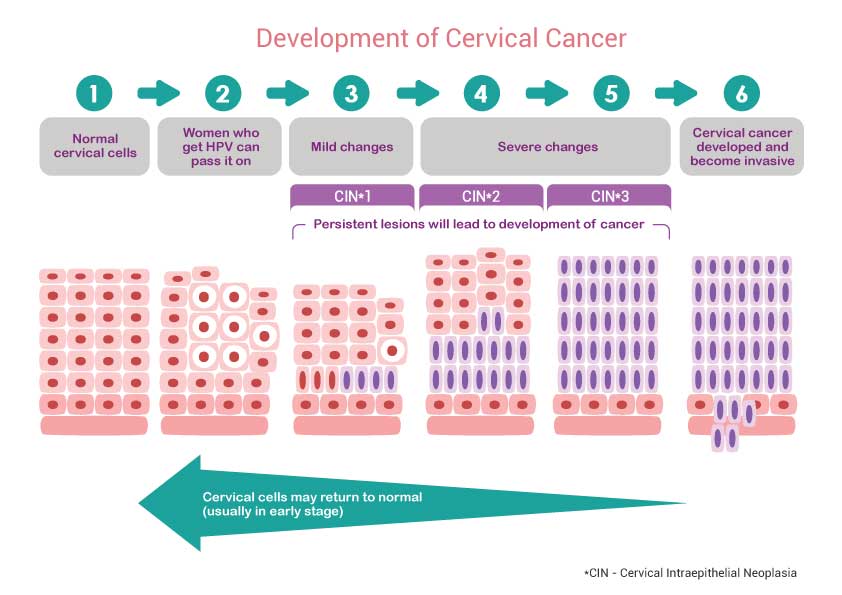How does HPV lead to cervical cancer?
The cervix is made of cartilage and covered by squamous and cylindrical cells, connects the uterus and vagina. Cervical cancer is a malignant tumor that could invade the cervix and spread all over the body, from adjacent organs such as vagina, nerves, pelvis and kidney, to more distant organs such as liver, lungs or the brain.
Cervical cancer is not a hereditary disease, the main cause of the disease is being infected with HPV. The continuous attack by HPV would cause pathological changes in cervix cells, the abnormal cells are called Cervical Intraepithelial Neoplasia (CIN). CIN can be further divided into CIN1, CIN2 and CIN3, in accordance to severity. The abnormal cells are not cancer cells, however, if the virus could not be eliminated by the immune system or the cervix is continuously infected by HPV, cervical cancer may then be developed eventually.
The table below explains how HPV leads to cervical cancer:

Stage: Changes of cells in the cervix
Normal: Cells in the cervix remain normal
HPV attacks cervix cells: The virus could transmit to others
If the virus cannot be eliminated by the immune system or the cervix is continuously infected by HPV, the following conditions may gradually develop:
CIN1: 1 in 3 cells in the cervix would grow in abnormal manner, which is considered as a mild level of precancerous cervical lesions
CIN2: Nearly 2 in 3 cells in the cervix would grow in abnormal manner. CIN from this stage onwards is considered as a severe level of precancerous cervical lesions
CIN3: The cervix cells would entirely become abnormal. Cervical cancer will be developed in 5 to 10 years if no treatment is applied
Cervical cancer: There are no signs and symptoms at the early stage of cervical cancer. As the cancer continues to develop, the symptoms will gradually become significant



